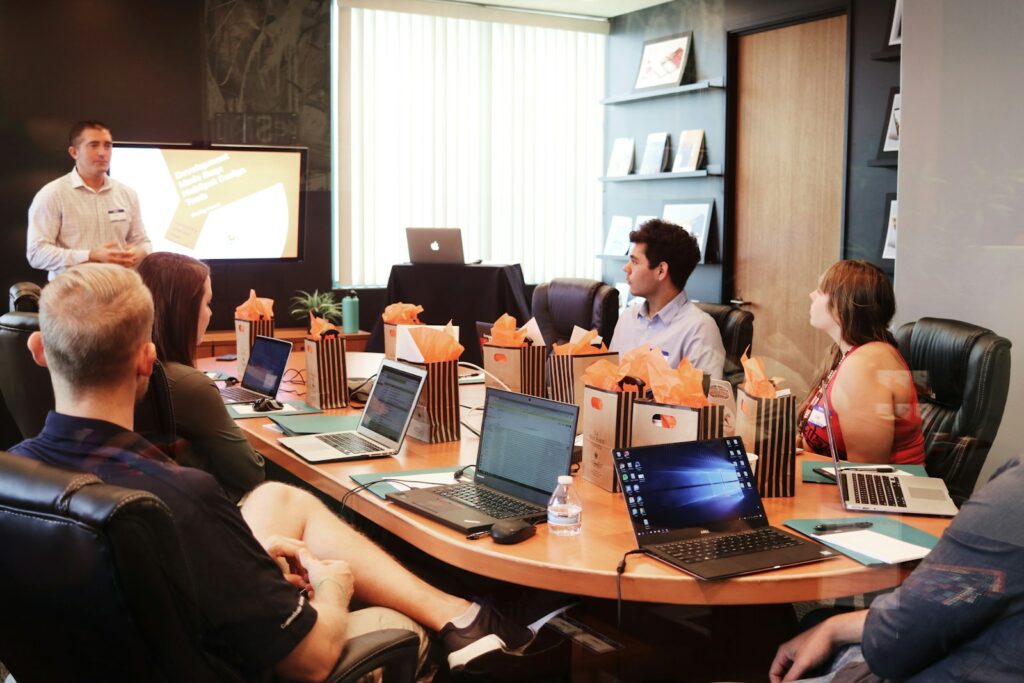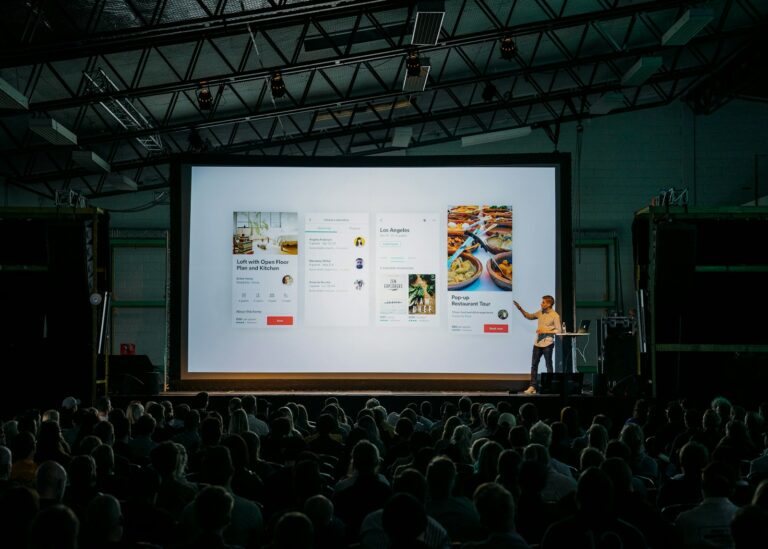Innovative Thinking: Fostering Creativity in Leadership

Embracing innovative thinking in leadership is not just a passing trend but an essential strategy in today’s fast-changing business environment.
The capacity of leaders to encourage creativity within their teams significantly influences organisational success, promoting innovation and cultivating a culture of ongoing enhancement.
By delving into the details of how innovative thinking influences the future of leadership and enables teams to tackle challenges with creativity, we can reveal the transformative potential that exists at the crossroads of creativity and successful leadership.
Key Points
- Creative leaders inspire a culture of innovation and empower teams.
- Encourage a variety of viewpoints and experimentation for creative solutions.
- Cultivate a culture of curiosity and collaboration to enhance creativity.
- A strategic emphasis on innovative thinking enhances organisational success.
Importance of Innovative Thinking in Leadership
Indefinitely pushing the boundaries of conventional leadership paradigms, innovative thinking emerges as the cornerstone for releasing unprecedented growth and success in organisational leadership. Creative problem solving, strategic innovation, leadership inspiration, team collaboration, and idea cultivation are integral components of innovative leadership.
Creative leaders not only inspire their teams to think outside the box but also empower them to collaborate, experiment, and generate new ideas. By fostering a culture of open communication and embracing change, innovative leaders create an environment where employees feel motivated and engaged. This approach to leadership not only enhances problem-solving skills but also cultivates a dynamic workplace that thrives on creativity and innovation.
Incorporating innovative thinking in leadership has been proven to drive revenue growth, outperform competitors, increase employee engagement, and boost the success rate of new product launches. By encouraging creativity and embracing new approaches, organisations can position themselves as high-performing industry leaders, setting the stage for continuous growth and success.
Characteristics of Creative Leaders
Creative leaders demonstrate a deep openness to new ideas and a dedication to creating an environment of innovation and experimentation within their teams. They embody a collaborative attitude, appreciating input from various sources to enhance creativity and problem-solving. These leaders have a high level of willingness to take risks, promoting calculated risks that challenge boundaries and lead to groundbreaking innovations. An empowerment culture is at the core of their leadership style, empowering teams to take responsibility for their work, promoting accountability, and encouraging a sense of creativity and initiative.
Furthermore, creative leaders have a vision for the future that inspires strategic goals and motivates their teams towards innovation. This vision acts as a guiding principle, directing efforts towards a common goal and ensuring consistency in actions. They use adaptive strategies, readily adjusting their approaches in response to changing market conditions and emerging trends. This flexibility helps them to remain relevant, seize opportunities, and maintain ongoing success in a fast-changing environment.
Strategies for Fostering Creativity
To foster a culture of innovation and creativity within an organisation, it is essential to implement a range of strategies that encourage collaborative thinking and experimentation. The dynamics of the team are crucial in promoting creativity, by bringing together individuals with diverse skill sets and perspectives to form cross-functional teams. This diversity can lead to innovative solutions through the combination of different ideas and approaches.
Creating an environment that nurtures creativity and allows for individual exploration is also vital. Allowing time for independent projects enables employees to explore new ideas and methods, fostering a sense of autonomy and creativity.
Another important strategy is to embrace a culture of curiosity within the organisation. Encouraging curiosity and experimentation helps to fuel creativity by fostering a culture of exploration and ongoing learning. Furthermore, providing a platform for sharing ideas is essential. By creating a safe space for team members to express their thoughts and collaborate openly, creativity and innovation can be cultivated by harnessing the collective intelligence of the group.
Improving Organisational Innovation
In today’s rapidly evolving business landscape, fostering a culture of innovation within organisations has become a strategic imperative for staying competitive and driving sustainable growth. Embracing an innovation culture not only enhances problem-solving skills but also encourages cross-functional collaboration, leading to increased adaptability to change and improved organisational performance.
By prioritising idea generation and providing training for creative thinking, organisations can experience a surge in successful implementation of innovative solutions. Innovative leadership that fosters creativity can notably impact revenue growth, with a 25% increase in revenue from new products and services and a 30% higher rate of employee retention.
Organisations that prioritise innovation enjoy a 64% competitive advantage over their peers and witness five times higher levels of innovation. By instilling a culture of creativity and innovation, leaders can drive organisational success, boost employee engagement, and pave the way for sustained growth and competitiveness in today’s dynamic business environment.
Impact of Creative Leadership
Shifting from fostering a culture of innovation within organisations, the impact of creative leadership resonates in driving organisational success and maintaining a competitive edge in the market. Creative leaders serve as beacons of inspiration, igniting a creative mindset within their teams to foster an innovation culture. By embodying visionary leadership, they propel their organisations towards uncharted territories, where risks are embraced, and boundaries are pushed.
Innovation thrives under the guidance of collaborative creativity, where open communication channels facilitate the sharing of diverse ideas and perspectives. Through promoting a culture that encourages risk-taking, innovative leaders empower employees to take ownership of their projects, nurturing a dynamic and forward-thinking work environment. This approach not only enhances problem-solving capabilities but also cultivates a space where creativity flourishes.
Frequently Asked Questions
What is Creativity and Innovation in Leadership?
Creativity and innovation in leadership involve creative problem-solving, thinking outside the box, leading by example, embracing new ideas, and cultivating innovation.
Leaders who exhibit these qualities inspire their teams to explore unconventional approaches, take calculated risks, and drive positive change.
What is the importance of innovative thinking in leadership?
In the domain of leadership, innovative thinking acts as a guiding beacon, much like a lighthouse illuminating uncharted waters. It enables problem-solving strategies, empowers leading with vision, encourages embracing change, nurtures cultivating curiosity, and sparks inspiration for innovation.
How do leaders encourage creativity?
Creative problem solving in leadership involves inspiring teams through innovative thinking, fostering a culture that values idea generation and experimentation. Leaders nurture creativity by encouraging team collaboration, embracing diverse perspectives, and providing a safe space for risk-taking.
How do you encourage innovation and creativity as a team leader?
Encouraging innovation and creativity as a team leader involves promoting a culture of collaboration. This can be done by embracing brainstorming sessions to produce a variety of ideas and encouraging risk-taking by creating a safe environment for experimentation. It is also important to provide access to the required resources and to celebrate achievements in order to strengthen a culture of creativity.
End of discussion
In the symphony of leadership, innovative thinking serves as the conductor orchestrating harmonious collaboration and sparking creativity within teams.
Just as a beacon guides ships through tumultuous waters, creative leaders illuminate the path towards progress and success.
By embracing innovation, leaders cultivate a culture of continuous improvement, propelling organisations towards new horizons.
Let us embrace the transformative power of innovative thinking and chart a course towards a future filled with boundless possibilities.




